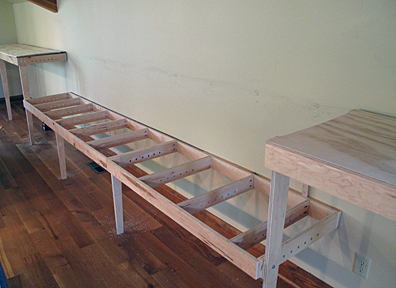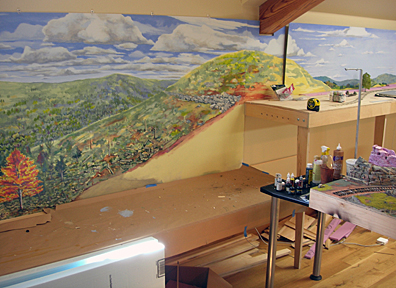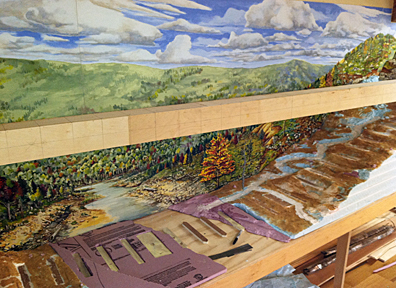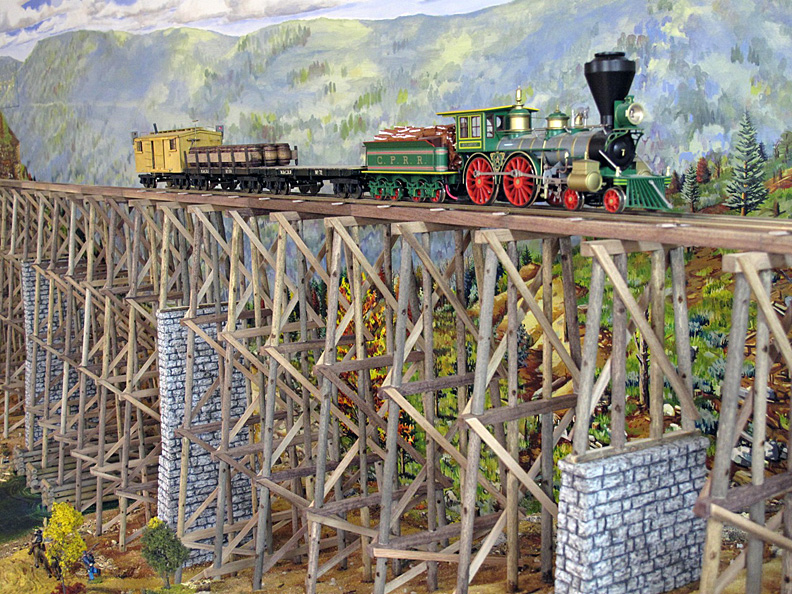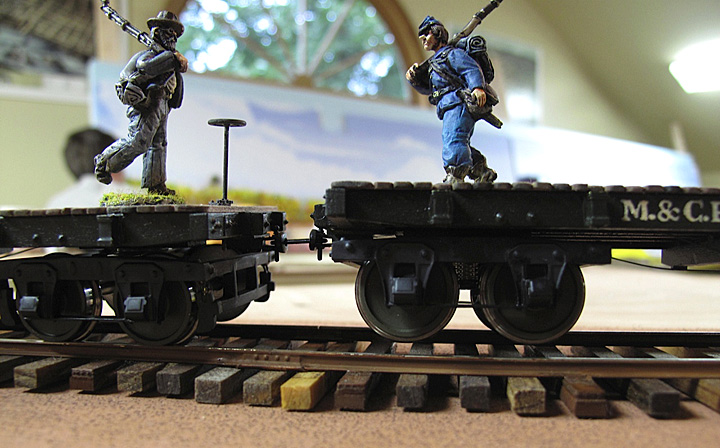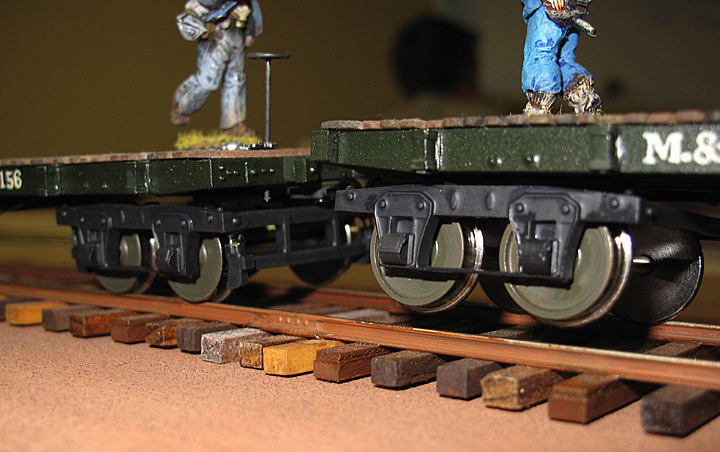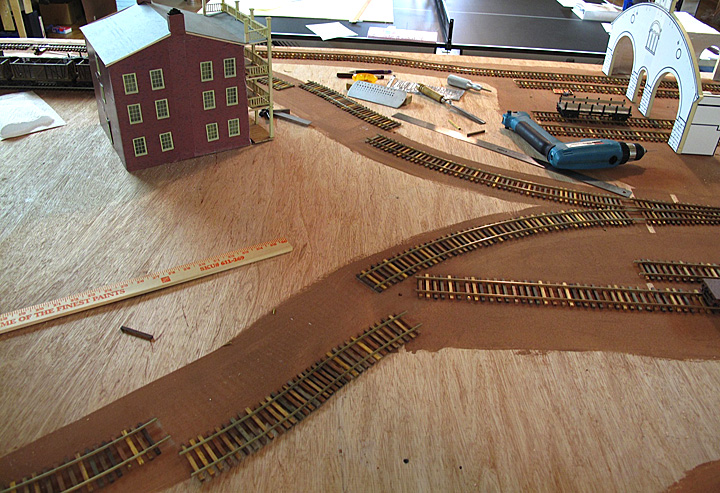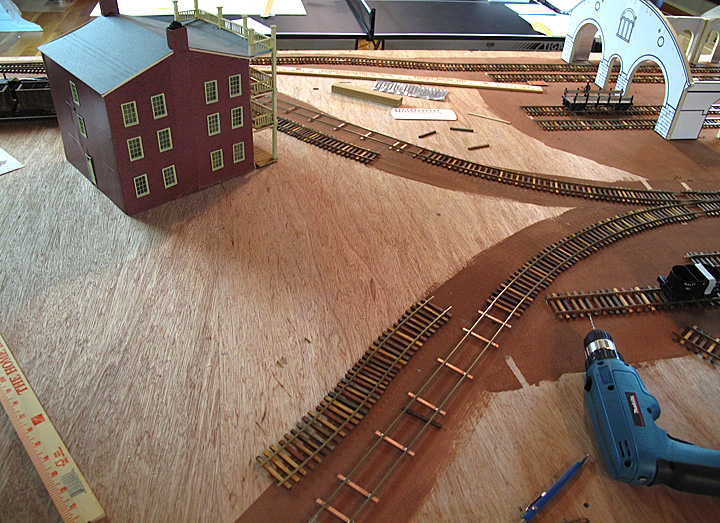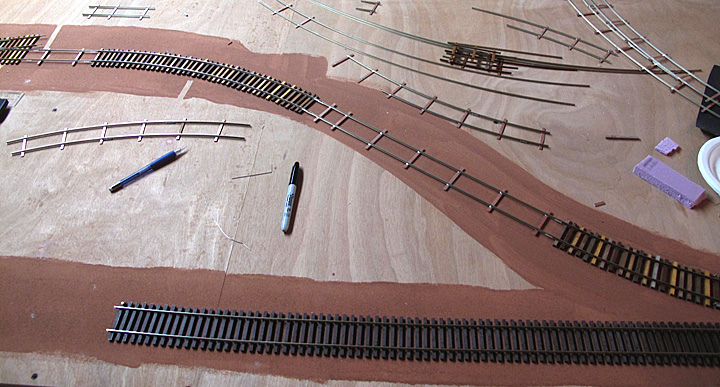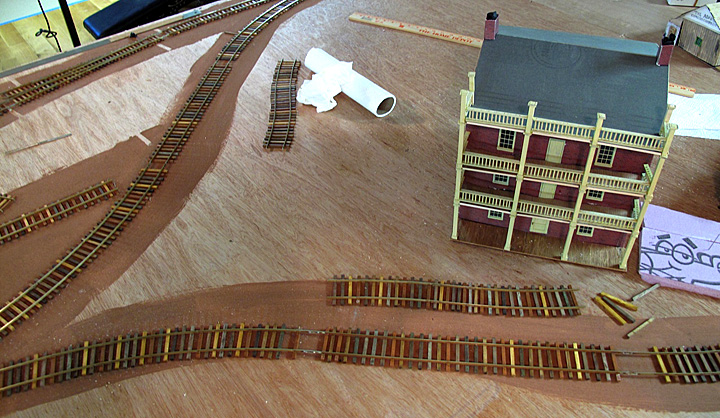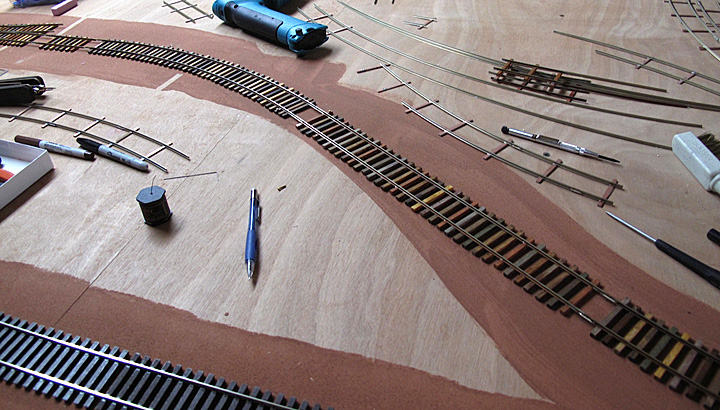
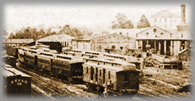
This website will display the development and construction of Charlie Taylor's O scale model railroad layout of the Memphis & Charleston Railroad during the American Civil War.
2012

Other records indicate that the Construction Corps of the Military Division of the Mississippi did the majority of the construction while assisted by the 1st Michigan Engineers and Mechanics who also did all the fortifications (blockhouses, rifle pits, etc.).

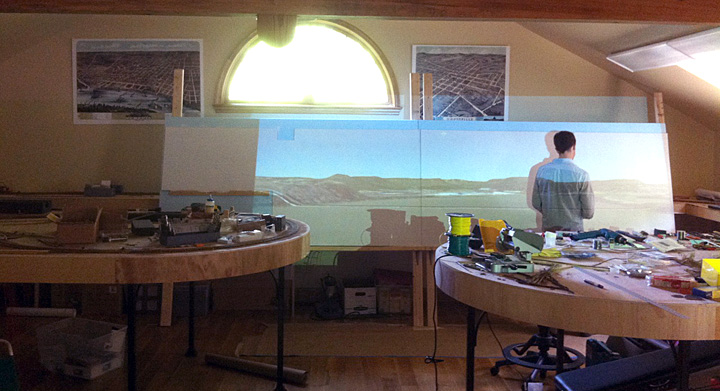
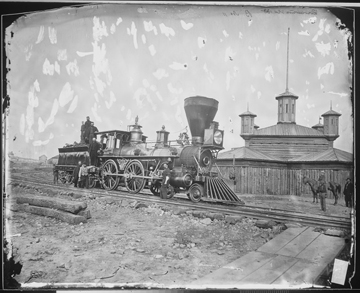
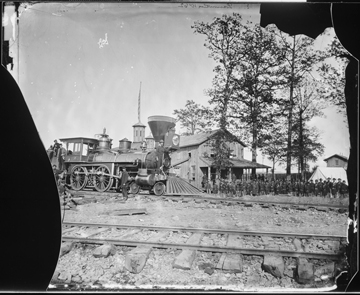
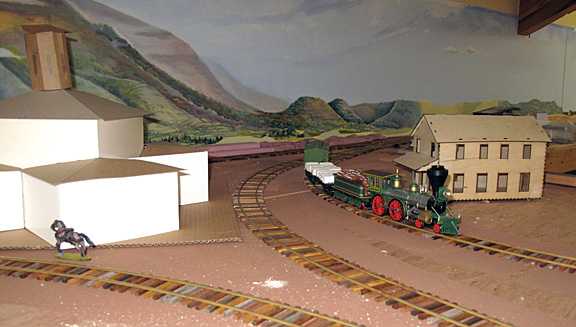
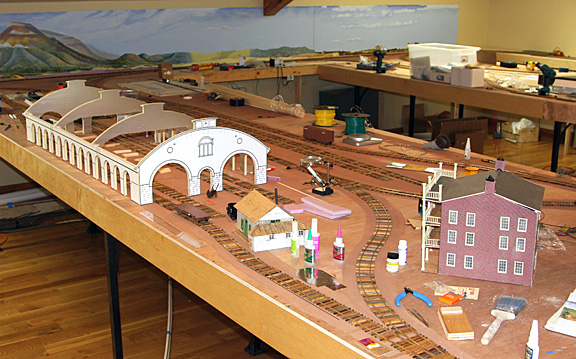
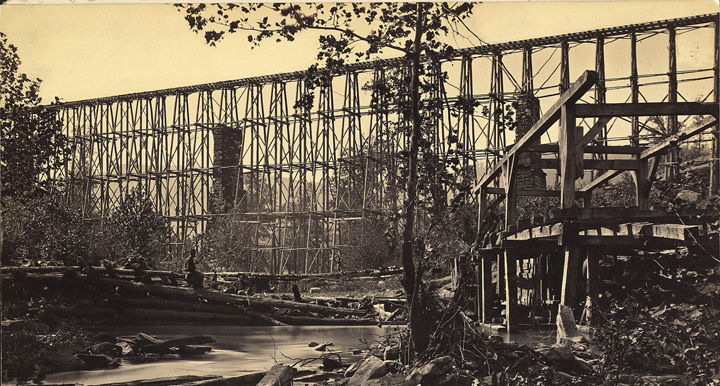
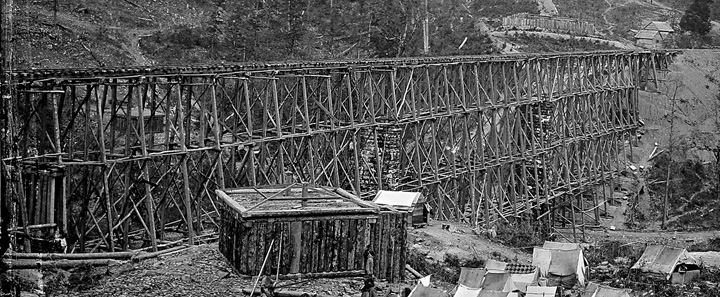
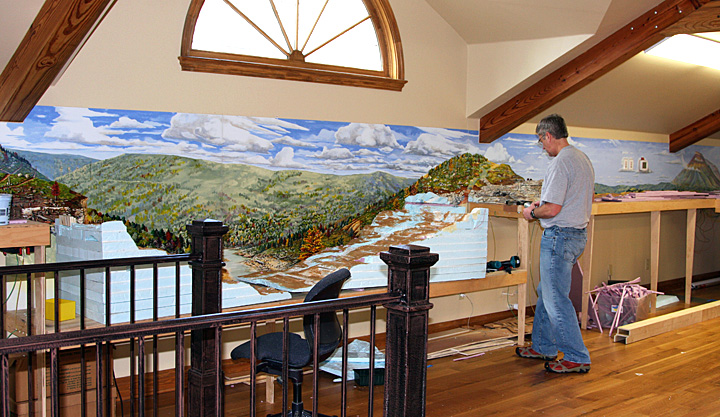
If you would like to see a description of the bridge construction CLICK HERE.
If you would like to see a description of the making of the bridge components CLICK HERE.
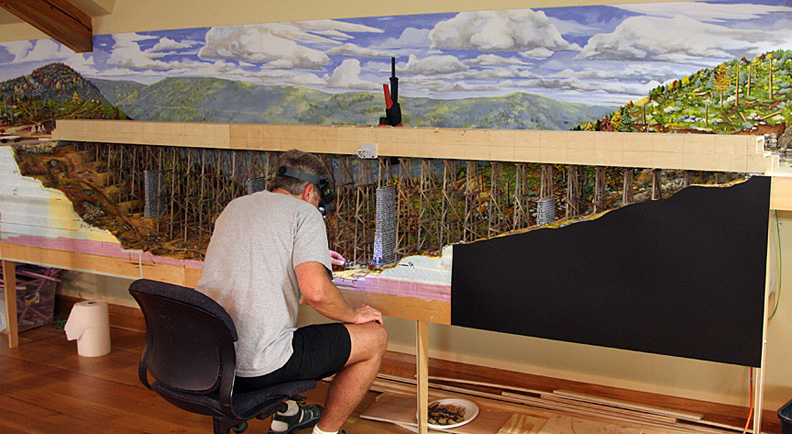
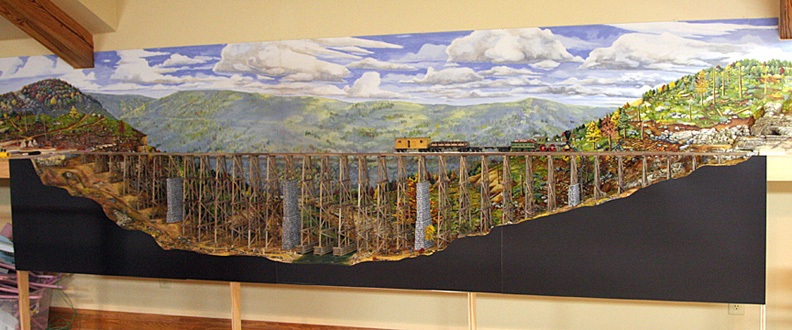
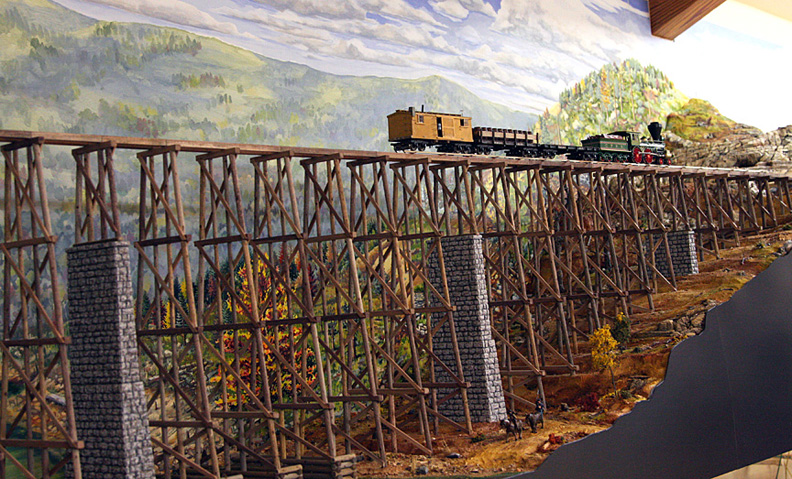
Charlie Taylor has hand made the track and turnouts and wired the layout. He is now primarily involved with the dimensional planning of buildings and railroad structures.
Will Shirey has painted all murals and miniatures. He has developed molds for cotton bales and other miniatures and is the primary sculptor of the 3-D scenery. He has also assembled and finished some of the rolling stock.
Sara Taylor, the fount of creativity and resourcefulness, has built and finished rolling stock kits, scratch built camp scenes and multiple buildings, including The Crutchfield House, Engineering Officers’ Quarters, and the fabulous ‘Russian Log Church’ stockade guarding the railroad yard.
Andrew Taylor has taken some of Sara’s cardstock models and programmed a modeling laser to cut plywood copies. He has developed some great techniques for assembly and is genius at determining the intersection of two planes in 3-space.
Charlie Curro has assembled several car kits and finished with custom lettering. He scratch built the emergency trestle at Running Water Gorge and is currently building the Chattanooga Train Shed.
Harold Taylor has made custom jigs for turnout assembly and trestle assembly, and also willingly provided hand and power tools for the project.
